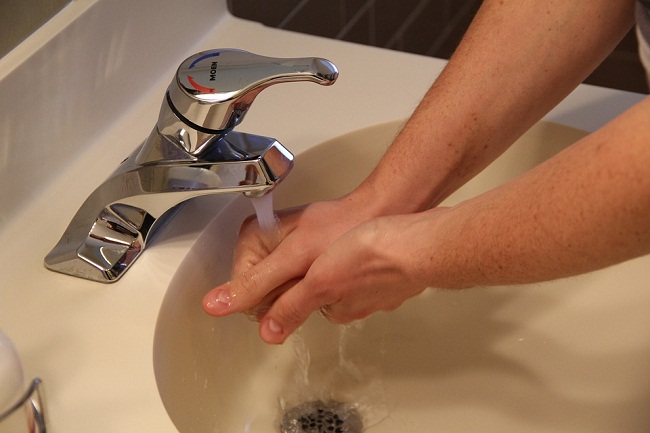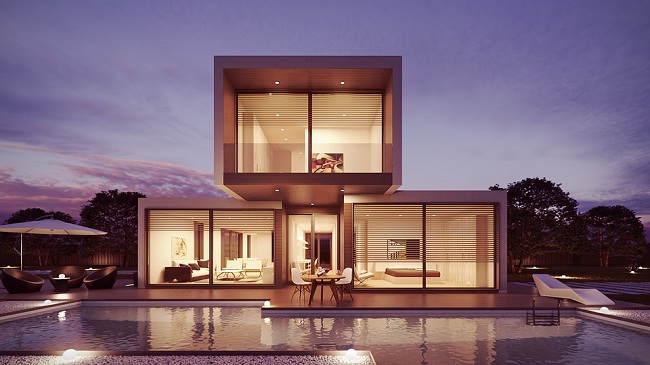
Maintaining proper hygiene is a crucial side of healthy living. People who have opted for a living in a tiny house are no exception. One misconception regarding tiny houses is the hygiene levels of these houses are poor.
It is true that in a tiny house, space remains for the bathroom and kitchen are very little. If it is built on a trailer then the bathroom is built under less than 100 square feet. It may sound peculiar but this is how much space a trailer can afford to have for a bathroom.
Even in the tiny houses that rest on the ground, the bathroom is not as big and spacious as we normally have in a standard size house. Shower heads are built just above toilets and shelves are adjusted in the wall between them.
The kitchen is normally built with one sink and a little counter. In many such houses, kitchen counter plays the dual role of kitchen and dining table.
Architect Antony Belluschi has built a tiny guest house behind his tiny house in the West Hills of Portland. Inside the guest house, he has created a ‘Kitch-bath’, the name is coined by Anthony himself, is a combination of kitchen, bathroom and changing room. For many people, these facts are quite disturbing.
Ironically, tiny house dwellers are actually working towards using less water for their daily sanitation purposes without sacrificing basic hygiene. Basically, they maintain hygiene in a smarter way.
Every year, in the US, thousands of gallons of water are used for sanitation purposes. The tiny house dwellers are making their contribution toward using less water and saving more. Just like wind farms make their contribution to using less water to generate energy compared to other forms of energy sources.
Let’s check out different aspects of hygiene and sanitation in a tiny house which are toilet, shower, baths, kitchen, sinks and ventilation-
Toilet- Tiny houses are built in a way so that they run on low consumption of recourses. These houses can have all types of toilets. A standard flush toilet consumes five gallons of water in a single flush. The commode style toilets need to cut a big hole in the bathroom floor along with a separate chamber outside to keep the human waste. Setting up such toilet is expensive and demands more space.
RV flush toilets are also in vogue which requires less money and also consumes less water. These toilets need a big tank to hold up black water and also require a good amount of space.
Other substitutes are chemical toilets and incarnating toilets. Chemical toilets come with a bucket full solution of dyes, deodorizers, and detergents. Poops and urine directly go into it but the worst part is, it needs to be emptied manually and it smells really bad. In incarnating toilets wastes are burnt through fissile fuels or electricity. Well, it is evident that they are not environmentally sustainable.
What a tiny house requires is a system that is less expensive and environmentally sustainable. A composting toilet does not require water and cause zero odors. It has a system to remove waste which later turns into soil and humanure (human+manure). This manure works excellent for gardening.
However, commercial composites are comparatively expensive and require electricity for ventilation. A bucket style toilet can also be an option which costs co less than $100. There are plenty of options to choose from. There is no dearth of toilet options for a tiny house.
Shower and Baths- In order to install a shower, the bathroom floor should be made of waterproof material. A shower stall can be there to increase the fun. Wet bath lovers can also enjoy their bath in their tiny bathrooms. There is a cheap alternative of the costly bathtubs. For many tiny house residents’ horse troughs is a convenient and stylish alternative. Some use portable showers that can generate hot water and give a blissful bath experience.
Sinks- Ideally, a tiny house should have one sink in order to save space for the other amenities. But some disagree as they prefer keeping kitchen and bathroom affairs separate. A tiny house can have two sinks if the owner wants.
Ventilation- Presence of good ventilation gives a tiny house touch of health and hygiene. A range hood in the kitchen and a bathroom fan successfully serves the purpose. One can install automatic air ventilation system for areas where windows cannot remain open throughout all the year.
A tiny house carries all the essential amenities that make it a home. The basic difference lies in the viewpoint. The tiny house residents have let off luxury and chosen a life that demands more understanding and cooperation among its dwellers and the society.





Leave a Comment